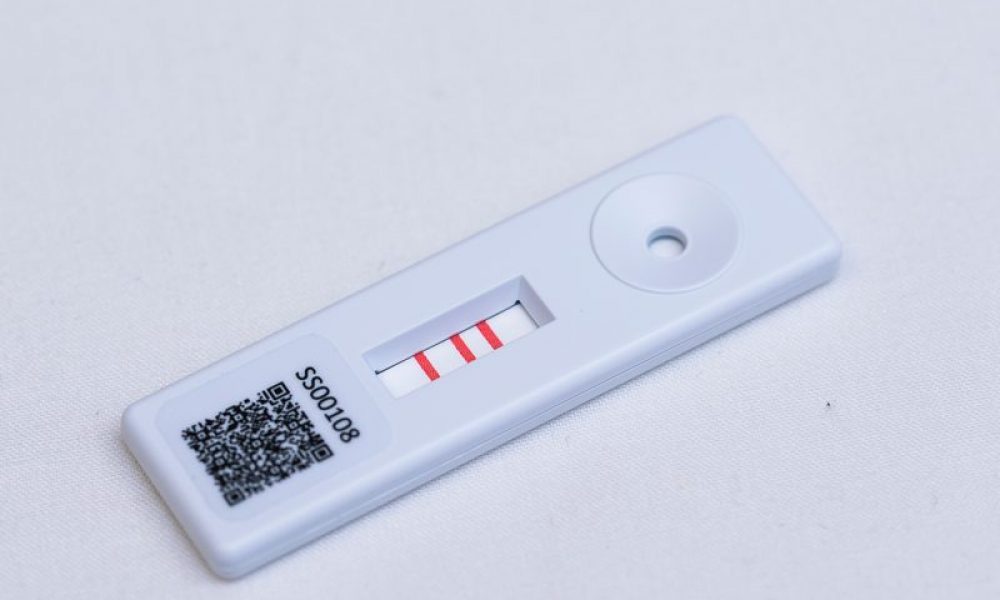Rapid diagnostics, in essence, brings testing away from the laboratory and closer to the patient, in the case of clinical diagnostics or veterinary diagnostics, or quite literally into the field, in the case of agricultural diagnostics.
 One key benefit of rapid testing is faster decision making which leads to earlier diagnosis, monitoring and treatment. Abingdon Health’s focus on rapid diagnostics is lateral flow testing, an established fast-growing segment of the market.
One key benefit of rapid testing is faster decision making which leads to earlier diagnosis, monitoring and treatment. Abingdon Health’s focus on rapid diagnostics is lateral flow testing, an established fast-growing segment of the market.
Lateral flow devices, commonly referred to as LFDs or LFTs, use immunoassay technology via a combination of antibodies, nitrocellulose membranes and coloured nanoparticles in order to produce visually interpreted results. In addition to using antibodies; aptamers, affirmers or other novel reagents can be incorporated. Lateral flow devices can also be combined with reader technology to store data or produce semi-quantitative or quantitative data to enhance results.
Why are lateral flow rapid tests important?
According to MarketsandMarkets, the global lateral flow assay market is projected to reach $12.6bn by 2026. The market drivers derive from an ageing population, greater incidences of disease, increased use of home-based tests, a desire for rapid testing across multiple sectors and a focus on decentralised testing.
However, following the increased use of lateral flow tests during COVID-19 pandemic the public's knowledge and awareness of rapid testing has grown. Thus increasing demand, meaning the lateral flow diagnostics market could exceed previous growth predictions.
Building on decades of research we have better insight into the causative agents of human, animal and plant disease, and the impact of substances on the environment and health. The ability to identify the biomarkers linked to these disease or environmental conditions means we can predict, monitor or diagnose more effectively and put in place treatments or preventative measures.
As this knowledge is shared between organisations and the public there is an increasing interest in early stage detection, on-going monitoring, and for real-time results. This is where a lateral flow rapid test comes into its own by offering a flexible, cost-effective and time-saving solution.
Lateral flow tests incorporate quick, easy-to-use protocols and can be used with minimal training. Because of their ease of use and portability, lateral flow tests are used in multiple industries and testing scenarios from the home or in-field, to emergency rooms and ambulances.
Even before the global use of lateral flow testing for COVID-19, an example of the importance of rapid tests is demonstrated by UNICEF's increased procurement of malaria rapid diagnostic tests (mRDTs). In 2008 UNICEF bought 3.8 million tests with this figure increasing to approximately 13 million in 2015: this figure is growing.
Efficient diagnosis
Although lateral flow rapid tests are simple to use, the science behind these assays is complex. Assay development follows a stage-by-stage process of feasibility, optimisation, before moving to technical transfer and manufacturing.
![]() It takes many years of experience and knowledge as well as the use of efficient lateral flow manufacturing equipment to produce an optimised, robust, rapid test strip suitable for market use.
It takes many years of experience and knowledge as well as the use of efficient lateral flow manufacturing equipment to produce an optimised, robust, rapid test strip suitable for market use.
During assay development, scientists will select the most appropriate raw materials (reagents, membranes, labels and antibodies) and optimise the test depending on sample type and market requirements. It is important to consider scale-up and technical transfer activities early to ensure the successful routine manufacture.
In addition, the biomarker of interest may be better suited to a particular assay format or label. We explain the pros and cons of each assay type in our article, ‘Lateral flow immunoassay formats’.
The quick and user-friendly protocols allow lateral flow assays to save time in a busy doctor or veterinary surgeries. In addition, desktop or Smartphone lateral flow reader technology can produce instant data to enhance the diagnosis and management of patients.
Diagnostic scenarios where lateral flow rapid tests can be applied
- In-the-field pre-screening prior to more time-consuming laboratory analysis
- Routine testing or rapid diagnosis in a doctors’ or veterinary surgery
- The confirmation of the presence or absence of a target in remote areas or in agricultural scenarios
- Data analysis, by clinicians or veterinarians, for the diagnosis and on-going management of a disease
- Confirmation of concentration levels to assess disease status in high-value crops
- Quantification of contaminant levels in food and feed
 Abingdon Health has developed a large number of diagnostic tests, across many industry sectors, as part of our lateral flow assay and reader contract services.
Abingdon Health has developed a large number of diagnostic tests, across many industry sectors, as part of our lateral flow assay and reader contract services.
For more information about why lateral flow rapid tests are important please speak to a member of our team on [email protected] or +44 (0) 1904 406 050.

